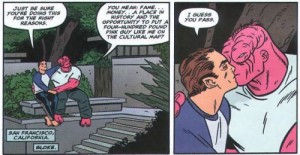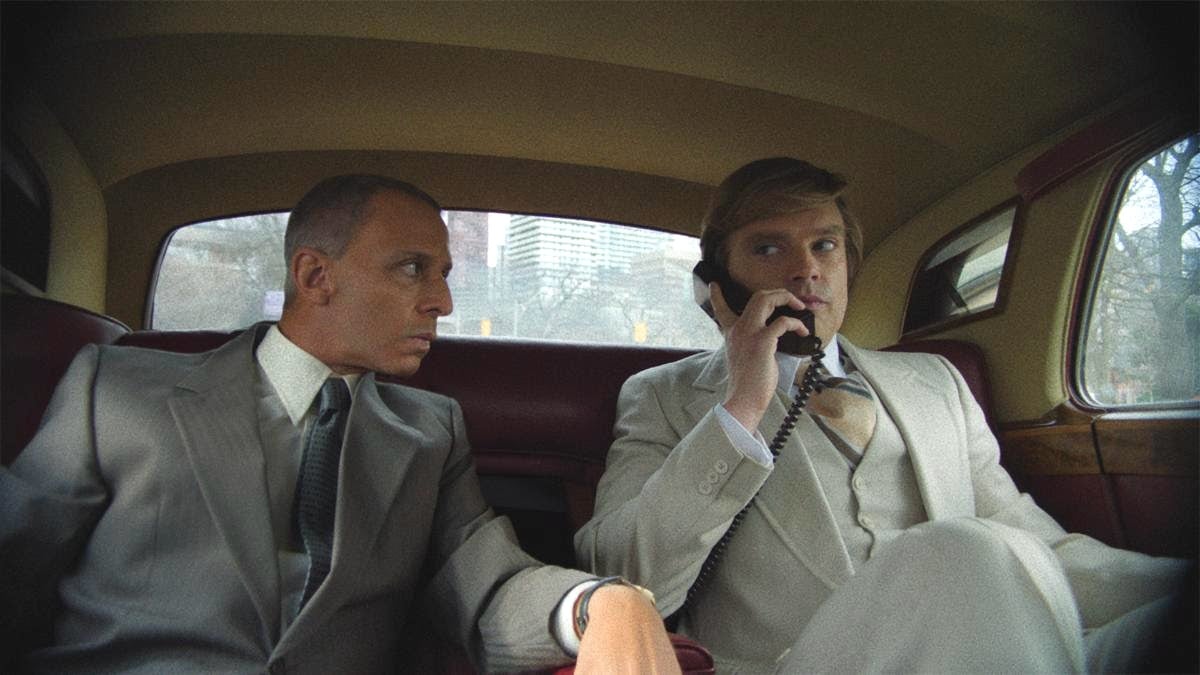I was all ready to ignore Kick-Ass. To just let it slip past my radar and fade into obscurity like Lions Gate’s Frank Miller’s Will Eisner’s The Spirit. I don’t see the point of willfully subjecting myself to things that I know I will only find repugnant. But then The Independent‘s interview with Mark Millar flipped my nerdrage switch. And then, I watched the trailers, and now… here I am.
Now I know what Kick-Ass is about, other than, you know, violence. Just as I suspected, it is not an original concept, but to my surprise it is an interesting one. The idea of the realistic superhero, with or without powers, has been tackled over and over again. Watchmen, The Authority, Top 10, Batman Begins, Hancock, the X-Men, Spiderman and more have all attempted, in some way, to bring the superhero down to earth.
In a way, this makes me more angry. I’d much rather Millar take a dumb concept and make a bad movie, than watch him take an idea I am honestly intellectually and creatively interested in and make a hash of it.
Anyway, here’s the first bit that got me: Millar says “There’s never been a superhero comic set in the real world.”
“Watchmen begins in the real world, but by page 20 there’s still a giant blue guy walking around. Even Batman has bullet-proof morphing cloaks.”
…”You can draw a straight line from the golden age of comics to Kick-Ass,” says Millar. “In the 1930s, you had the one-dimensional billionaire playboy, Bruce Wayne. You didn’t even know what his favourite drink was. In the Sixties, Stan Lee re-invented superheroes and gave them a second dimension, so you have an alcoholic hero like Tony Stark, or a hero who can’t pay his bills and worries about his schoolwork, like Peter Parker.
“Dave Lizewski is a three-dimensional hero, a guy who plays World of Warcraft every night and whacks off to internet porn, just like a normal person. Over 70 years there’s been a gradual drift to realism, and we’re now showing superheroes as real people for the first time.”
 I’m going to try to set aside the school yard pissing contest in those three paragraphs where Millar implies that he is as innovative (if not more) as Alan Moore, Bill Finger, and Stan Lee. I’m also going to try and quiet the little voice that keeps telling me that “three-dimensional hero” is the most incredibly BS literary term I have heard outside of a 9th grade English paper.
I’m going to try to set aside the school yard pissing contest in those three paragraphs where Millar implies that he is as innovative (if not more) as Alan Moore, Bill Finger, and Stan Lee. I’m also going to try and quiet the little voice that keeps telling me that “three-dimensional hero” is the most incredibly BS literary term I have heard outside of a 9th grade English paper.
Instead, I’d like to talk about literary realism.
Realism is not refraining to break the laws of physics. Realism is not the use of widely known stereotypes held by teenage boys. Realism doesn’t have one liners. Realism doesn’t make action movies for the 18-24 year old male. Realism is when your characters have emotions and traits that aren’t sexy, or funny, or rational, or easily explained, or even particularly interesting, and it requires a certain amount of depth. I am here to say, without prevarication, that if our definition of superhero realism does not include Watchmen, there is no such thing as superhero realism.
My love/hate relationship with Watchmen is another post entirely.
This is actually not the bit that made me most angry. Nor was the bit where Millar says that Alan Moore must be embarrassed that the mainstream culture knows his work from movies rather than the originals, which seems unlikely given Moore’s policy of complete indifference to every movie production based on his work. Mark Millar is known for making broad statements and I really would have expected no less.
No, what really got me was when The Independent claimed that Mark Millar “wrote the first gay kiss between male superheroes,” and not just because this is easily disproved by about three minutes on Google (hence, the panels which accompany this article).
But because my introduction to Mark Millar’s writing was his stint on The Authority, which contained some of the most misguided and insulting attempts at depicting gay characters that I have ever read. Villains and heroes who use rape as a weapon, a wedding scene that might have been commendable if its details weren’t so out of character, and an abrupt change in tone from “Yes, Apollo and Midnighter are gay. …and?” to “OMG, GUYS LOOK WE HAZ GAY SUPERHEROES, BUTTSECKS LOL.”

Which just brings us back around to Mark Millar trying to handle an interesting idea and making a hash of it. There are two things that superhero comics must cultivate if they want to be accepted by the larger culture, especially if they have realism as their goal: taste and subtlety. Millar lacks both of them.
PS: RE Kick-Ass: The pet name Honey-Bunny can no longer be used in the context of graphic violence. Tarantino got that one. We need to move on.








Published: Feb 22, 2010 04:33 pm